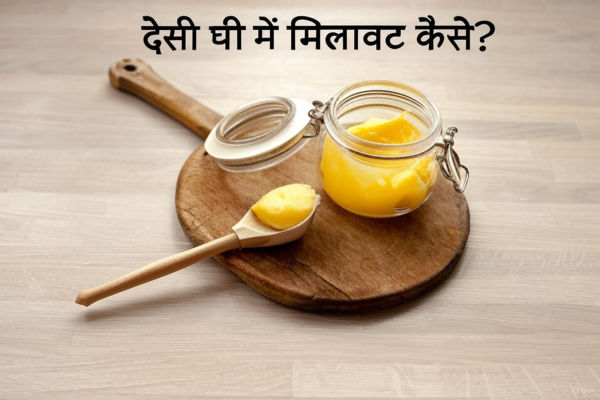
adulteration in desi gheeImage Credit source: Getty Images
The ghee seized in Bengaluru was adulterated with coconut oil, vegetable oil and dalda. KMF Vigilance Unit has exposed this by running a campaign. Selling adulterated goods at expensive prices not only causes financial loss to people, but it also has a bad effect on health. Even before this, there are often reports of adulteration, hence it is important to be cautious before consuming anything. Desi ghee plays an important role in the plate of Indian homes. Desi ghee enhances the taste of everything from vegetables to roti to khichdi and it is rich in many nutrients. Including it in the daily diet in a balanced quantity is considered beneficial, but due to adulteration it harms your health. In this story you will know how you can identify adulterated ghee.
According to clinical nutritionist Medhavi Gautam, ghee is a soluble fat. It contains Vitamin A and Vitamin D in good quantities. Apart from this, it also contains small amounts of protein, vitamin E, K and some other micronutrients. While its consumption is beneficial for bones and muscles, desi ghee is also considered beneficial for the skin. Now let us know how to identify adulterated ghee.
difference in aroma and taste
When desi ghee is adulterated, its aroma reduces, hence artificial fragrance is used. Because of this, the aroma of adulterated ghee may generally feel very strong or may be slightly different from organic desi ghee. One feels sticky while eating adulterated ghee because it is not granular, soft and soluble like pure desi ghee. By this you can find out that this ghee is not right.
adulteration of oil or dalda in ghee
To increase the quantity of less ghee, things like palm oil, dalda are mixed in it. Which you can identify by the way the ghee solidifies. Pure desi ghee sets evenly and different types of layers will not be visible in it, but if it is adulterated ghee then difference in layers may be visible when it sets. Especially the top and bottom layers will look different. Apart from this, after freezing, colored spots may form in it.
How does it look when dissolved in water?
You can test the purity of ghee by putting a few drops in hot water. When you put pure ghee in hot water, it will form an even layer on its surface and gradually melts and dissolves. Whereas adulterated ghee spreads like a mist in water or dissolves quickly as soon as it is added. If any kind of spots are seen in the water then it is a sign of adulterated ghee.
Heat the ghee and check.
When you heat pure homemade ghee, it gives off a slight aroma when it smokes, but adulterated ghee smokes more and its smell may be pungent and strange, which may be due to the chemicals and oils added.
try it on your hand
While buying ghee, you can test it by applying it on your palm or the back of your hand. Pure ghee melts quickly on the skin, feels smooth, and its fragrance is mild. Adulterated ghee leaves more stickiness on the skin and sometimes its smell can also be very strong which indicates adulteration.
-
Mumbai Metro 2A Train Roofs Face Corrosion Issue; MMMOCL Begins Anti-Rust Repairs

-
Attention train passengers! PRS services will be disrupted on THIS date and time; No ticket booking, cancellation, or inquiries; Check here

-
'We Have Chance to make a comeback": Bhuvneshwar Kumar Backs India To Bounce Back After Humiliating Loss To South Africa

-
US-owned English Club Norwich City Hire Former Club Brugge, Monaco Coach Philippe Clement

-
India's Semiconductor Ambition: IBM's Rakhee Chachra Urges Ecosystem Growth & Innovation at India-US Economic Summit
